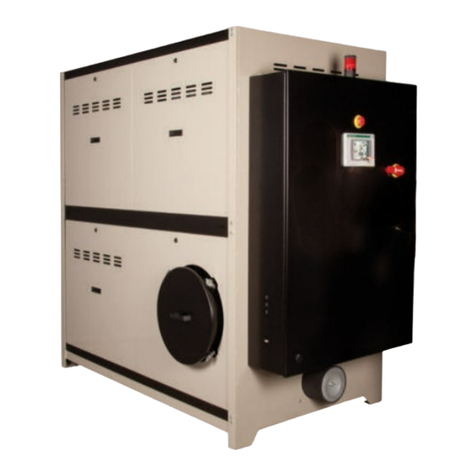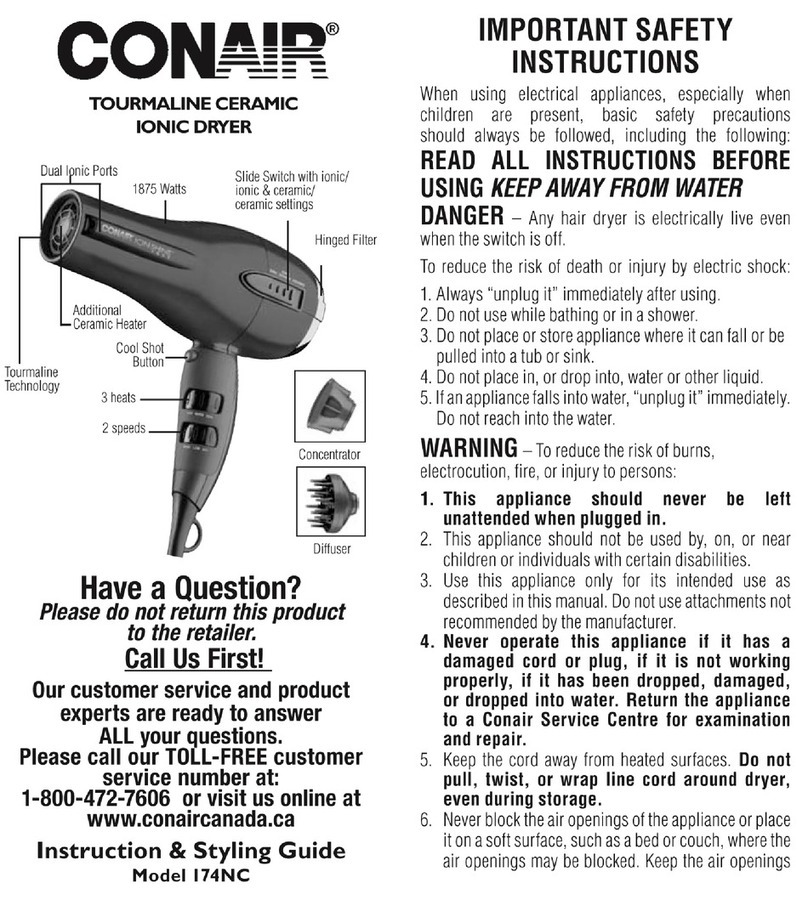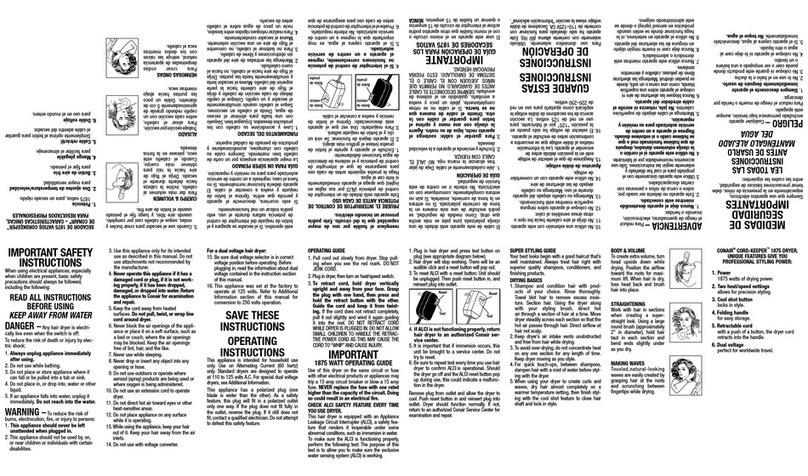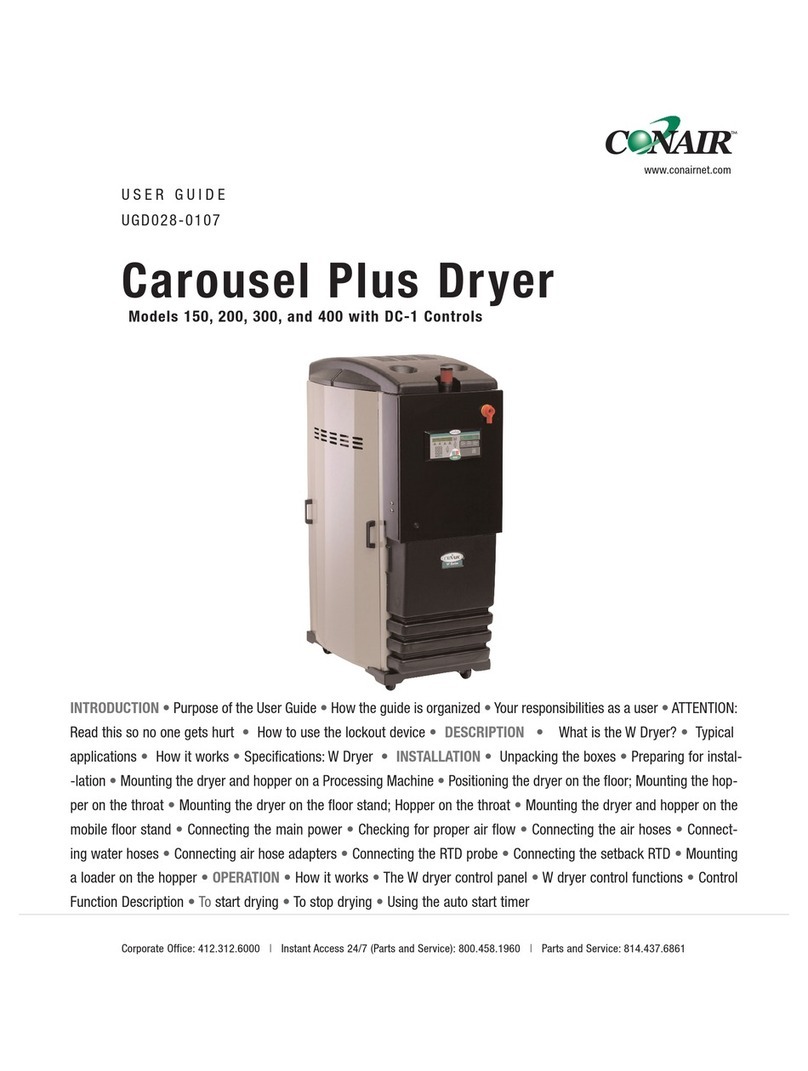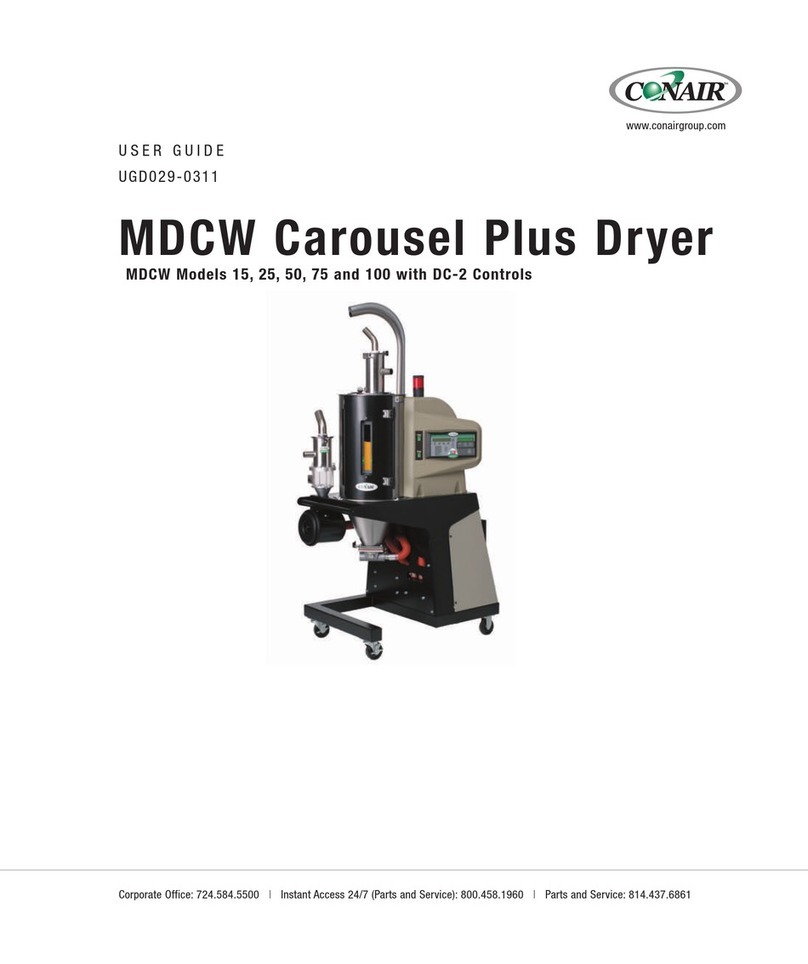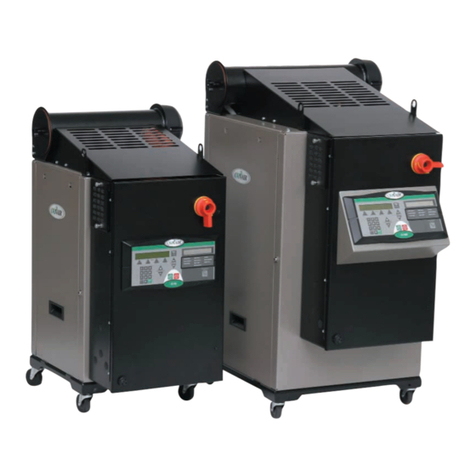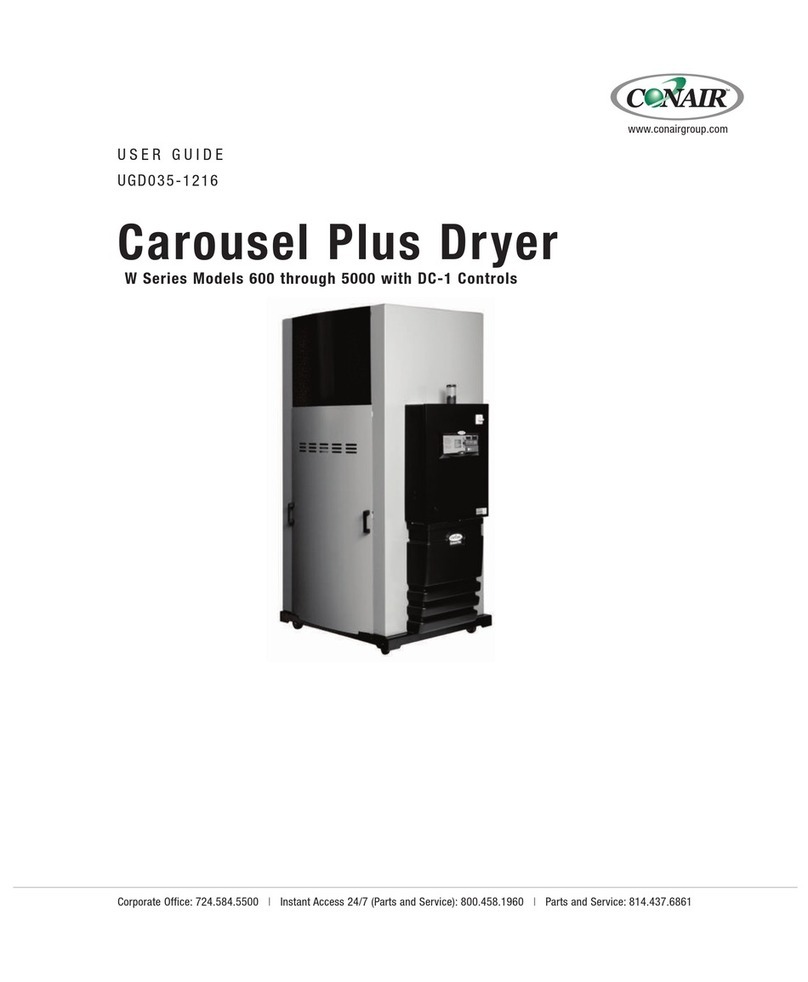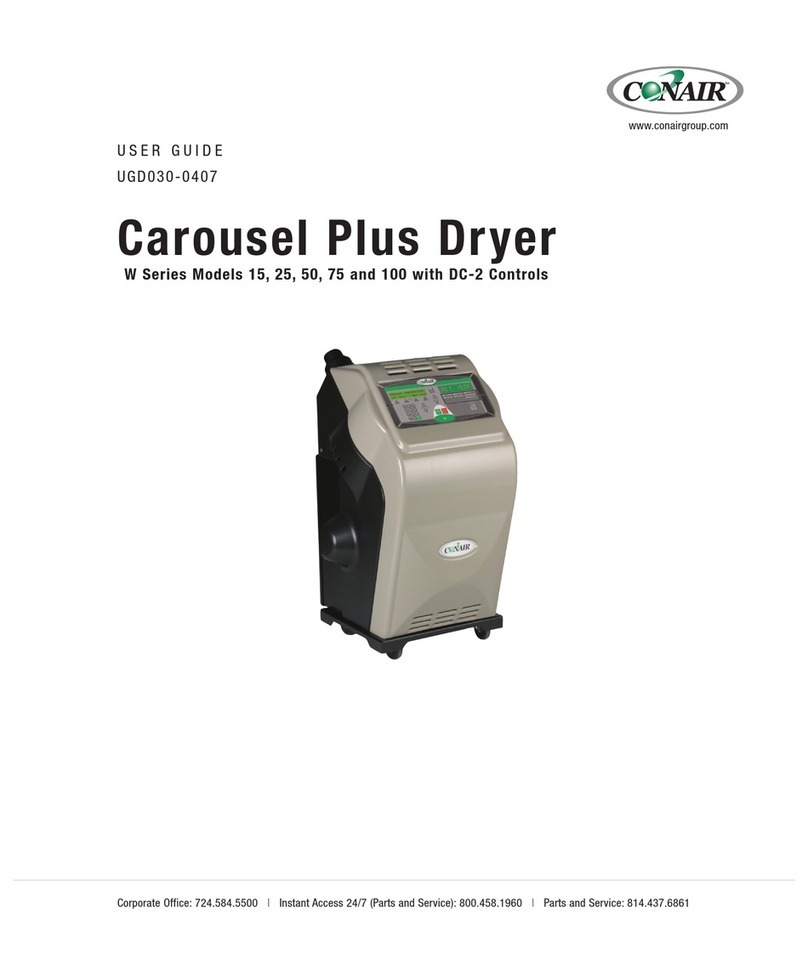
Ta b le o f Co n t e n t s l i
Ta b l e o f Conte n t s
1-1 I n t r o d u c t i o n
Purpose of the User uide. . . . . . . . . . . . . . . . . . . . . . . . . . . . . . . . . . . . . . . 1-2
How the uide Is Organized . . . . . . . . . . . . . . . . . . . . . . . . . . . . . . . . . . . . . 1-2
Using the Carousel Plus W Series as a Central Dryer. . . . . . . . . . . . . . . . . . . 1-2
Your Responsibility as a User. . . . . . . . . . . . . . . . . . . . . . . . . . . . . . . . . . . . . 1-3
ATTENTION: Read this so no one gets hurt . . . . . . . . . . . . . . . . . . . . . . . . . . 1-4
How to Use the Lockout Device. . . . . . . . . . . . . . . . . . . . . . . . . . . . . . . . . . . 1-6
2-1 D e s c r i p t i o n
What is the Carousel Plus W Series Dryer?. . . . . . . . . . . . . . . . . . . . . . . . . . 2-2
Typical Applications . . . . . . . . . . . . . . . . . . . . . . . . . . . . . . . . . . . . . . . . . . . 2-2
How the Carousel Plus W Series Dryer Works. . . . . . . . . . . . . . . . . . . . . . . . 2-4
Specifications: Carousel Plus W Series Dryer . . . . . . . . . . . . . . . . . . . . . . . . 2-6
Carousel Plus W Series Dryer Options. . . . . . . . . . . . . . . . . . . . . . . . . . . . . . 2-7
3-1 I n s t a l l a t i o n
Unpacking the Boxes . . . . . . . . . . . . . . . . . . . . . . . . . . . . . . . . . . . . . . . . . . .3-2
Preparing for Installation . . . . . . . . . . . . . . . . . . . . . . . . . . . . . . . . . . . . . . . .3-3
Positioning the Dryer on the Floor. . . . . . . . . . . . . . . . . . . . . . . . . . . . . . . . . 3-3
Removing the Cable Tie from the Desiccant Wheel . . . . . . . . . . . . . . . . . . . . 3-3
Connecting the Main Power . . . . . . . . . . . . . . . . . . . . . . . . . . . . . . . . . . . . . 3-4
Connecting the RTD probe . . . . . . . . . . . . . . . . . . . . . . . . . . . . . . . . . . . . . . 3-5
Connecting the Setback RTD Probe . . . . . . . . . . . . . . . . . . . . . . . . . . . . . . . 3-5
Checking for Proper Air Flow . . . . . . . . . . . . . . . . . . . . . . . . . . . . . . . . . . . . 3-6
Connecting the Air Hoses . . . . . . . . . . . . . . . . . . . . . . . . . . . . . . . . . . . . . . . 3-9
Connecting the Dryer to the Hopper . . . . . . . . . . . . . . . . . . . . . . . . . . . . . . . 3-9
Connecting Air Hose Adapters. . . . . . . . . . . . . . . . . . . . . . . . . . . . . . . . . . . 3-10
Connecting the Aftercooler . . . . . . . . . . . . . . . . . . . . . . . . . . . . . . . . . . . . . 3-11
Mounting a Loader on the Hopper . . . . . . . . . . . . . . . . . . . . . . . . . . . . . . . 3-12
Testing the Installation . . . . . . . . . . . . . . . . . . . . . . . . . . . . . . . . . . . . . . . . 3-12
Using Communications (Optional) . . . . . . . . . . . . . . . . . . . . . . . . . . . . . . . . 3-13
4-1 O p e r a t i o n
The Dryer System control panel . . . . . . . . . . . . . . . . . . . . . . . . . . . . . . . . . 4-2
How to navigate the control screens . . . . . . . . . . . . . . . . . . . . . . . . . . . . . . . 4-3
DC-T Control Panel . . . . . . . . . . . . . . . . . . . . . . . . . . . . . . . . . . . . . . . . . . . . 4-6

